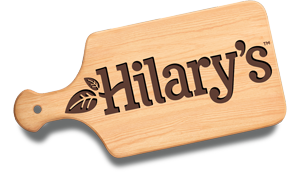Living Gluten-Free in a Family That’s Not

With food allergies becoming more prevalent, it is common to find individual family members with intolerances. I was diagnosed with a gluten allergy in January 2015 and was hit with the shock of how drastically my diet would have to change. I love healthy foods, but when I was suddenly cutting out many of my favorite options I felt a little lost on what to eat, especially since I was the only one in my family doing so.
Here are some tips to making the gluten free transition. It will be fun and educational for you andyour family. Though some of your family members might not have the intolerance you do, they will likely be open to learning, supporting and trying some of your new gluten free recipes!
- Research. Learn what gluten is and better yet what hidden things contain gluten. Once you get the hang of ingredient reading you’ll be able to spot hidden ingredients that contain gluten (especially when you are being offered food by someone). This is good to know in case your family buys you food or offers to make you something. By knowing the ingredients, you will be able to side step any hidden gluten.
- Understand how it affects your body. Does it make you sick, give you skin irritation problems or gastro issues? Knowing this will help you detect if you are having a reaction. It can also help you explain to your friends and family the type of effect it has on you…and exactly why you don’t want to risk contamination.
- Set boundaries and rules. If you are really allergic, designate food preparation areas so you don’t cross contaminate with your family’s gluten items such as bread, pasta, soy sauce etc. If you are now purchasing your own gluten free items, designate a gluten free section in the pantry. There is no need for your specialty goodies to get eaten up if your family can eat the other items in your kitchen.
- Don’t know what to cook? Start by finding substitutes for the things you are used to eating. There is plenty of time for you to find brand new foods options. But while learning, and while teaching your family, try things like gluten free pasta, gluten free pancake mix or gluten free bread. Make your family a meal- they’ll be excited to eat dinner along with you.
- Don’t get frustrated. Soon enough this will all come naturally. But until then you will have to endure people eye rolling because gluten free diets are a ‘trend’ or feeling silly not knowing if something has gluten in it. Just let the haters hate and instead allow your learning experience to inspire others. Make this new lifestyle exciting and educational, not depressing for you and everyone around you.
- Check or call restaurants before eating out. This was my number one fear…what if I can’t eat out with my friends? Many restaurants have gluten free menus. And some have options that might not be listed, so it is always good to ask your server. Note: it is good to notify your waiter of a gluten allergy. Many chefs will cook gluten free items separately so as not to contaminate.
By learning how to cook gluten free and by simply eating these things in your home, you will be able to make the gluten free transition with ease. Your family and friends will start picking up on what things have gluten in them and will be happy to see the positive impact your gluten free diet is having on your body.
You can do this!
Some additional links to help you on your gluten free journey!
What is gluten: https://celiac.org/live-gluten-free/glutenfreediet/what-is-gluten/
How gluten negatively affects some people: http://authoritynutrition.com/6-shocking-reasons-why-gluten-is-bad/
Compilation of links all regarding gluten: http://greatist.com/health/gluten-free-resources-celiac-awareness-month
Super cute website with articles, info graphics and tools for being gluten free: https://www.glutenfree.com/#filters/

Shelby Lemon

